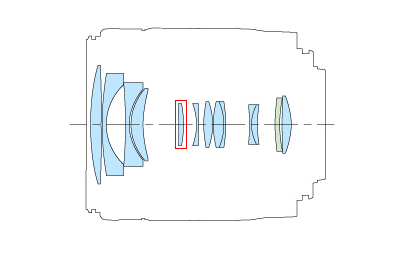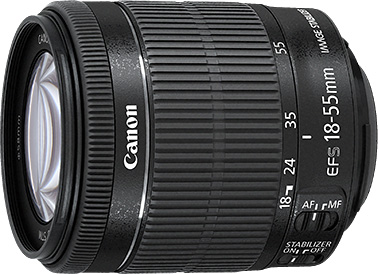- Specifications
- Block diagram
| Marketed | April 2013 |
| Original Price | 36,000 yen |
| Lens Construction (group) | 11 |
| Lens Construction (element) | 13 |
| No. of Diaphragm Blades | 7(circular aperture) |
| Minimum Aperture | 22-36 |
| Closest Focusing Distance (m) | 0.25 |
| Maximum Magnification (x) | 0.36(at 55mm) |
| Filter Diameter (mm) | 58 |
| Maximum Diameter X Length (mm) | 69×75.2 |
| Weight (g) | 205 |
The EF-S18-55mm f/3.5-5.6 IS STM, a standard-zoom lens developed in response to the increase in video-recording needs among digital SLR camera users.
In addition to inheriting the same high performance as its predecessor, the EF-S18-55mm f/3.5-5.6 IS II (released in March 2011), a lens that was well received for delivering high image quality in a compact, lightweight design, the Canon EF-S18-55mm f/3.5-5.6 IS STM realizes greatly enhanced AF performance during video capture.
Employing a new focus mechanism design incorporating a stepping motor (STM) and lead screw, the EF-S18-55mm f/3.5-5.6 IS STM achieves significantly improved AF operation when recording video. In particular, when paired with a Canon SLR camera equipped with Movie Servo AF, such as the EOS Rebel T5i(EOS 700D) or EOS Rebel SL1(EOS 100D) (both to be available from late April 2013), the lens realizes exceptionally quiet, smooth AF performance, even during Live View shooting (excluding Quick AF). The lens enables users to effortlessly set and maintain focus even for moving subjects, allowing even first-time users to easily enjoy capturing video. When shooting using the viewfinder, the EF-S18-55mm IS STM’s high-speed CPU and optimized AF algorithm makes possible fast, quiet and highly accurate AF operation.
The Canon standard-zoom lens includes such special optical lens elements as a high-precision aspherical lens, which effectively corrects for various aberrations that can occur while zooming, facilitating high-resolution, high-contrast imaging performance across the entire zoom range. Through optimized lens positioning and coatings, the model also greatly minimizes the occurrence of flare and ghosting.

 Aspherical lens
Aspherical lens  IS Unit
IS Unit


